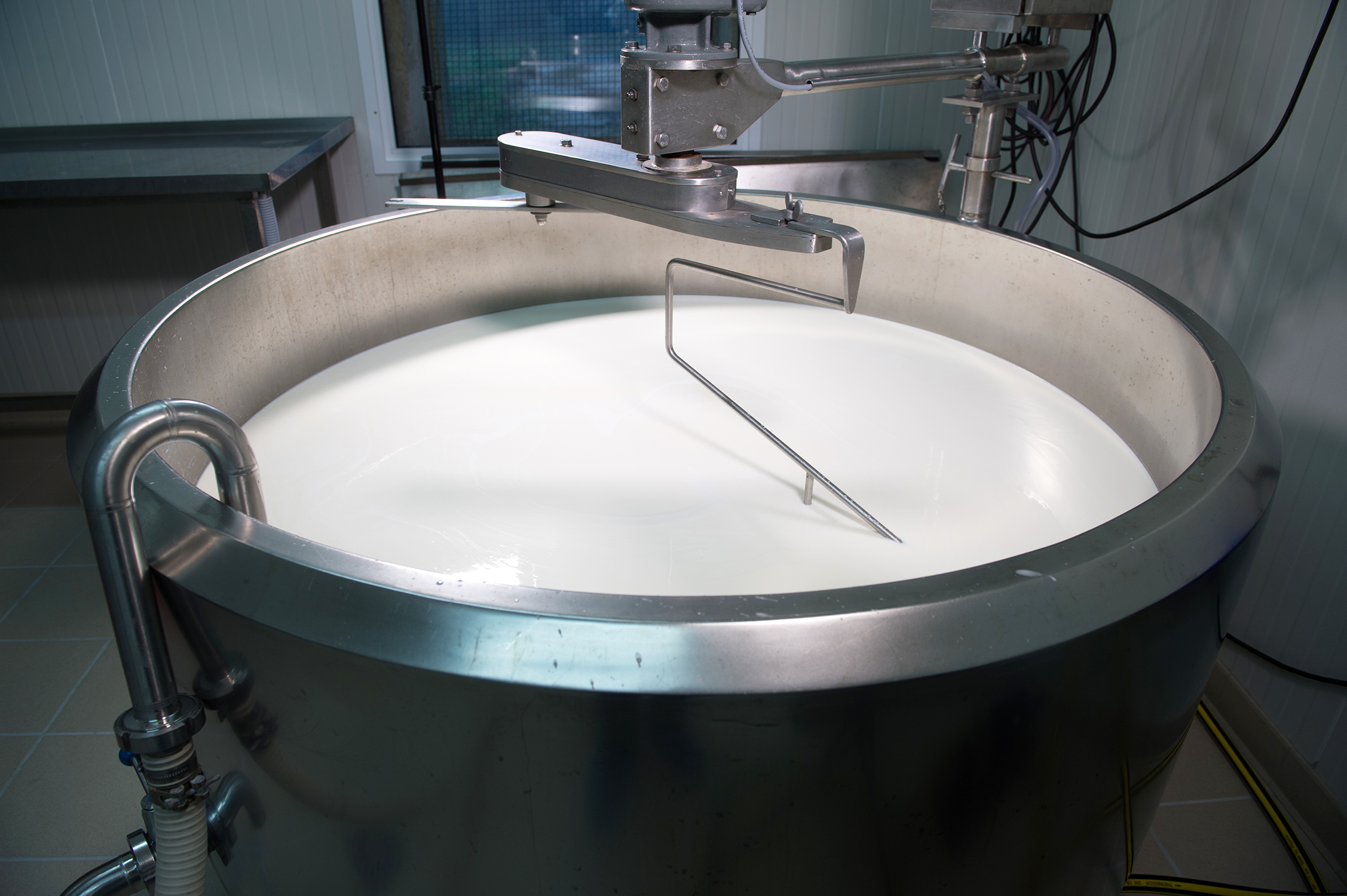Valorization of Whey Permeate by Green Biotechnology

Project entitled:
Development of Innovative Green Biotechnology for the Valorization of Cheese Co-product : the Biobac Process
Michèle Heitz, Nathalie Faucheux, Ryszard Brzezinski, Sébastien Rodrigue, Antonio Avalos Ramirez, Luc Belzile, Stéphane Godbout, Anne Giroir-FendlerHighlights
- This project focuses on the transformation of lactose contained in whey and permeate into diols (2, 3-butanediol (BD) or acetoin (A)) through a fermentation process named Biobac. This process creates a genetically superior bacteria.
- The project consists of 3 parts:
- The genes facilitating the production of BD or A were chemically synthesized and added to the chromosome of the bacteria Escherichia coli. Mutations inactivating the key genes of five competing fermentation pathways were generated, thereby increasing the yields of both products and decreasing the production of sub-products.
- The initial results of the fermentation of whey and whey permeate on a laboratory scale produce diol yields of 19% and 12%, respectively (solute mass/solution mass). We are currently optimizing the fermentation conditions.
- In order to verify the economic and environmental feasibility of the valorization of whey and its permeate, a life cycle assessment in combination with an energy efficiency index assessment is underway.
- Three sizes of cheese companies were assessed. Five co-product valorization scenarios were considered, including the valorization of whey protein concentrates (WPC), biogas and the new Biobac process evaluating the valorization of whey and its permeate. These comparisons will allow us to identify the most efficient processes from an economic and environmental perspective.
Objectives
Genetically modify a bacteria using a single-step fermentation process, in order to produce two added-value products and to study the product’s environmental impacts and energy efficiency.
Specific objectives:
- Using metabolic engineering, develop bacterial strains of Escherichia coli able to produce molecules of commercial interest such as acetoin and/or 2, 3-butanediol. Validate the application to valorize cheesemaking co-products such as whey or its permeate, containing a high concentration of whey that can be fermented.
- Optimize fermentation of whey and its permeate on a laboratory scale in different operating conditions in the presence of a modified bacteria.
Results and potential benefits
- The research has allowed us to identify three coding genes for enzymes able to successively transform pyruvate produced through glycolysis into acetolactate, then into acetoin and, lastly, into 2, 3-butanediol. These genes were synthesized and then integrated into the chromosome of Escherichia coli, which made production of the molecules possible. A series of deletions in five fermentation pathways was then developed, which could potentially compete with the production of acetoin and 2, 3-butanediol. The addition of the 2, 3-butanediol metabolic pathway in combination with the deletion of certain fermentation pathways endogenous to E. coli produces the highest yields during the fermentation of glucose. However, the diol yields remain modest (15-20 g/L).
- In regards to the fermentation of whey (25 g/L) (on the laboratory scale in the presence of M9 and urea, Mg and Ca, at a temperature of 37 ⁰C, an initial pH of approximately 7, and under atmospheric pressure), the diol yield is 21% (m/m) after 20 hours of fermentation, while it is 18% (m/m) after 24 hours with a whey concentration of 12.5% (g/L). In identical operating conditions, the diol yield obtained from whey and its permeate is less than 20% (m/m).
- In regards to the assessment of environmental impacts and energy efficiency, the points addressed concern:
- the valorization of dairy co-products that may have commercial value, providing a sustainable supply source as an alternative to petroleum;
- an improved quality of life and the protection of natural resources (water) by reducing the biochemical oxygen demand (BOD) and chemical oxygen demand (COD) of industrial waste produced in dairy processing;
- the development of references for life cycle analysis in order to calculate the energy efficiency of the valorization of whey and its permeate.
- These points will constitute the first study to compare a valorization process for cheesemaking co-products in Quebec. The study of the life cycle assessment and energy efficiency assessment in order to identify the processes or critical steps and create strategies that reduce the environmental impacts.
Professionals trained
- Angela Maria Trivino, master’s student in agri-food engineering.
- Jean-François Rousseau, master’s student.
- David Fernandez, PhD student.
Financial contributions
Partnership for innovation in dairy production and dairy processing (EPI2011-2017):
- Fonds de recherche du Québec – Nature et technologies
- Ministère de l’Agriculture, des Pêcheries et de l’Alimentation du Québec
- Novalait